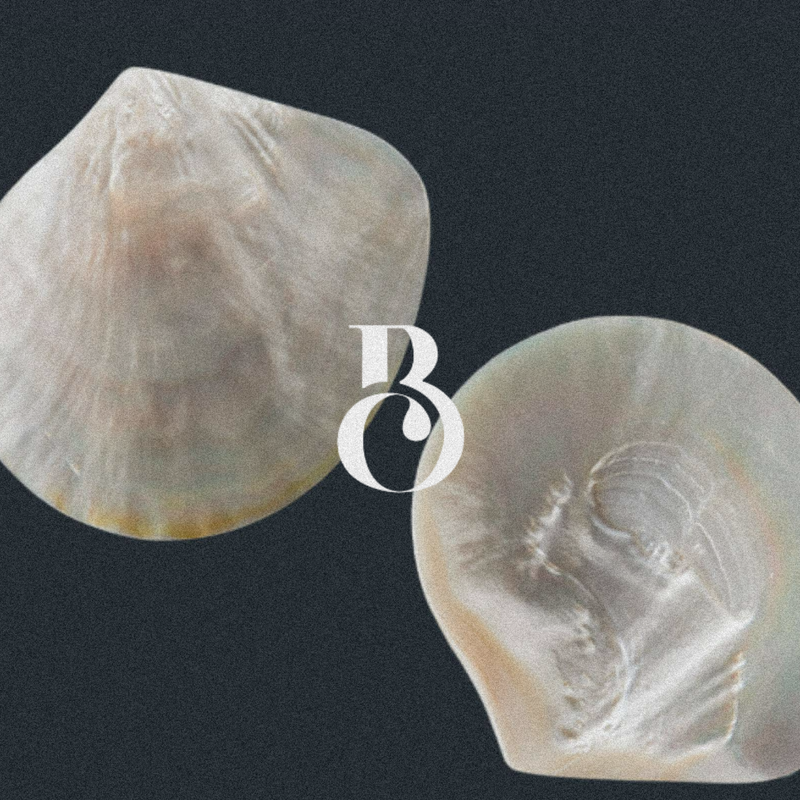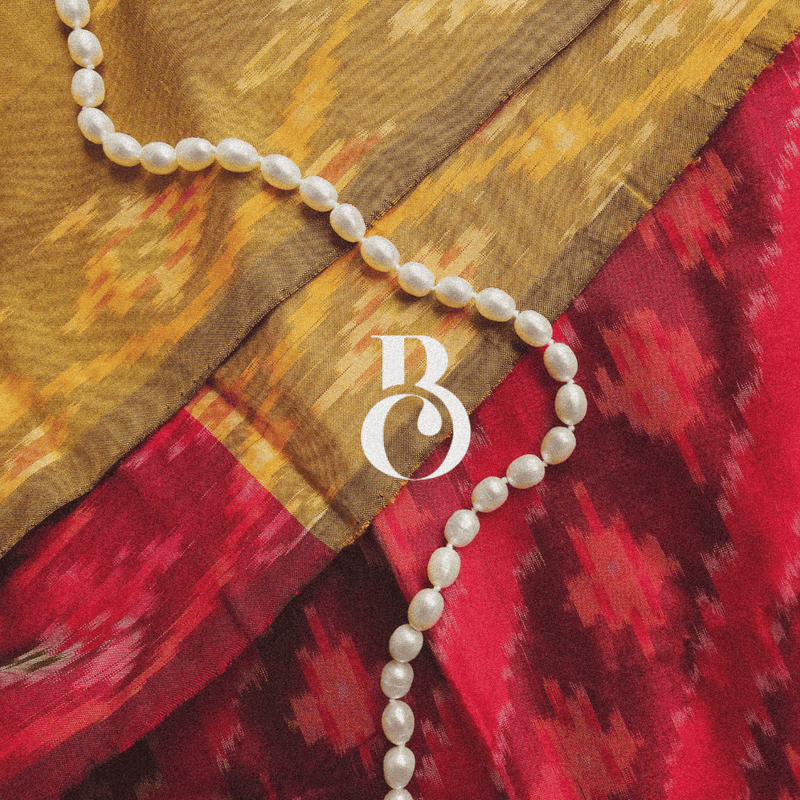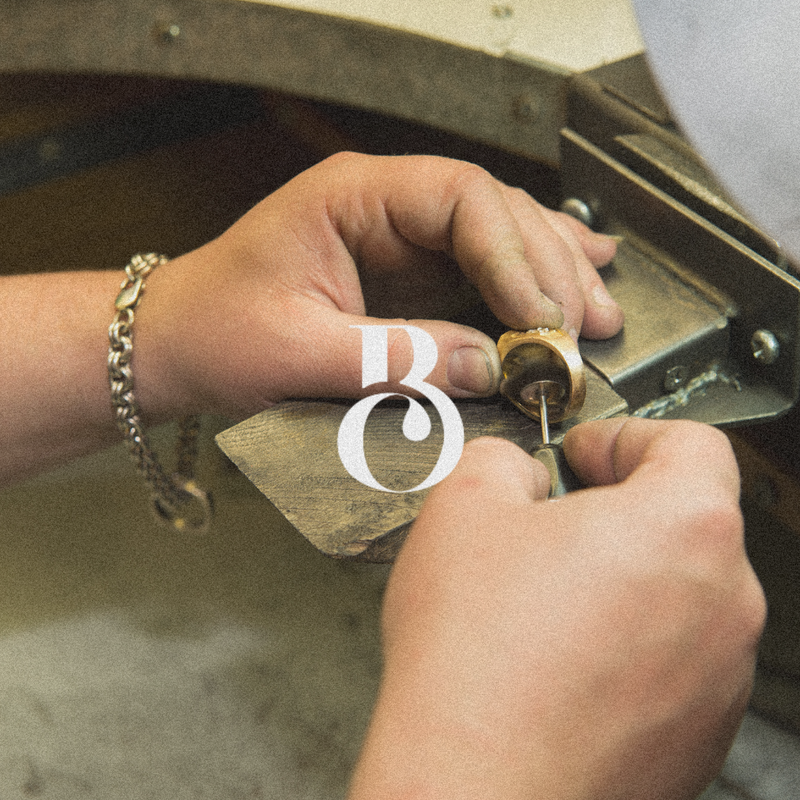

The 'Raio' Earrings Recyled Silver, Gold and Mother of Pearl
Our debut collection, ‘A Luz’, features a range of pieces handcrafted in Portugal from Mother of Pearl, one of our favourite materials. For centuries, this radiant and iridescent material has captured the imagination of artisans and designers alike. Let's dive into the history and beauty of mother of pearl jewellery.
What is Mother of Pearl?
Mother of pearl is the iridescent inner layer of the shell of certain mollusks, such as oysters and abalone. This inner layer is made up of many thin sheets of calcium carbonate, woven intricately together over time to create a strong and resilient material that is perfect for jewellery making. There are different types of mother of pearl, each with its unique properties and characteristics. White and ivory-coloured mother of pearl is the most common and widely used, with a soft, subtle radiance that makes it perfect for a wide range of jewellery styles.

Because the layers of each shell are formed naturally, mother of pearl can appear in a dazzling array of shape and colour combinations. No two pieces using this material can ever be totally identical making for truly unique statement pieces.
The History of Mother of Pearl in Jewellery
Ancient civilizations, such as the Egyptians, Romans, and Chinese, left tangible evidence of their appreciation for this iridescent material in adornments dating as far back as 4200 BCE. Through these early periods, mother of pearl was not only valued in jewellery for its aesthetic appeal but also carried symbolic significance, often representing purity and prosperity.
The Renaissance and Baroque eras, spanning from the 14th to the 18th century, marked significant growth of mother of pearl's presence in jewellery. Artisans such as Benvenuto Cellini and Hans Holbein the Younger embraced the material for its versatility, as it seamlessly complemented an array of gemstones and precious metals.
Today, modern tools like laser cutting and waterjet cutting, which gained prominence in the late 20th century, have allowed artisans to craft more intricate designs with higher precision and reduced wastage. Additionally innovations in harvesting and processing techniques have made mother of pearl more accessible for jewellery production, fostering widespread availability to a global market.
How is Mother of Pearl different from Whole Pearls?
While whole pearls consist of solid layers of nacre, mother of pearl is made up of many separate layers that are bonded together. This difference gives mother of pearl its unique, multicoloured appearance and shimmering lustre. It also makes mother of pearl jewellery more durable and resistant to damage, as the layers are stronger and less likely to break or chip.

How is Mother of Pearl Harvested?
Harvesting mother of pearl is a delicate and labour-intensive process. The mollusks are carefully selected and raised in controlled aquaculture environments to ensure their health and well-being. Once they have reached maturity, the shells are carefully harvested, and the inner layers are extracted and cut into sheets in order to be processed into jewellery.

How is Mother of Pearl Jewellery Produced?
The harvested mother of pearl sheets are first sorted based on colour and thickness. These sorting criteria influence the design possibilities and aesthetics of the final jewellery piece. Then, the sheets are cut into specific shapes using precision equipment, such as laser cutters or waterjets.
Next, artisans use techniques like shaping, carving, or inlaying to create intricate designs and patterns. After the design work is complete, the pieces are polished to reveal the characteristic iridescent shimmer of mother of pearl.

In the final stages of production, the mother of pearl components are combined with precious metals or gemstones, to create one-of-a-kind pieces. The use of mother of pearl in jewellery manufacturing showcases the harmonious blend of traditional craftsmanship and modern industrial techniques, resulting in timeless and elegant creations.
Caring For Mother of Pearl
- Gentle Cleaning: To maintain the natural lustre of mother of pearl, clean it regularly with a soft, damp cloth. Avoid using abrasive materials or harsh chemicals, as they can damage the delicate surface. If needed, you can use a mild, non-abrasive jewellery cleaner specifically designed for delicate gemstones.
- Avoid Contact with Chemicals: Mother of pearl is sensitive to chemicals, so it's crucial to avoid exposing your jewellery to substances like perfume, hairspray, cosmetics, and household cleaning products. These chemicals can dull the surface and potentially harm the iridescent layers.
- Store Separately: When not wearing your mother of pearl jewellery, store it separately from other jewellery pieces to prevent scratches and potential damage. Consider placing it in a soft pouch or a jewellery box with individual compartments lined with a soft, non-abrasive material. This will help protect the delicate surface and prevent it from coming into contact with harder materials.
- Limit Exposure to Moisture: Moisture can be detrimental to mother of pearl, potentially causing it to warp or lose its lustre over time. Remove your jewellery before swimming, showering, or engaging in water-related activities. Additionally, always wipe your jewellery dry with a soft cloth if it comes into contact with moisture to prevent any long-term damage.

@aleynatalini and the Raio Earrings







0 comments